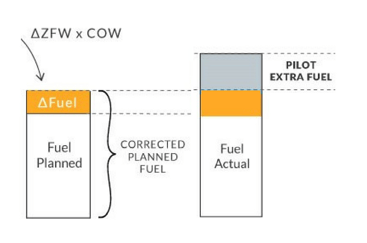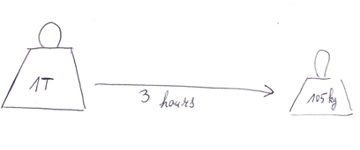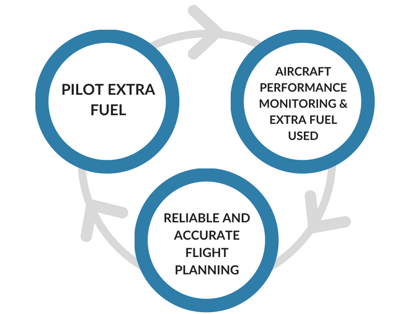|
What you'll learn:
|
The amount of fuel needed for a flight is calculated by the dispatch taking into account the aircraft performance, planned route, weather conditions and all legal reserves for contingency, holding, alternate, etc.
Pilot Discretionary Fuel is the extra fuel added by the captain on top of the fuel recommended by the flight dispatcher. It is represented in grey on the graph above.

Nowadays, the International Air Transport Association (IATA) suggests that extra fuel should be optimized at dispatch level, based on historical data and statistics.
After this optimization, the captain can adjust this value for exceptional reasons that were unknown (or not considered) at dispatch time. Among those reasons are the weather at arrival (in case of storms), the state of Air Traffic Control (in case of strike), etc.
At the end of the day, the captain is responsible for the safety of the flight, which means that he/she gets to decide the quantity of fuel on board.
However, with the accurate flight planning systems that are in use nowadays, these quantities of extra fuel in most cases remain untouched (see IATA, 2011, page 115).
Estimating the proper amount of extra fuel is not easy: underestimating it can compromise safety, which is always the #1 priority of any airline. But overestimating it comes at a significant cost.
Indeed, the unused extra fuel, which remains at landing, had to be carried during the whole flight and increased the fuel consumption by increasing the aircraft's weight. To compute the impact of carrying this fuel, you must multiply the unused aircraft fuel by the cost of weight (CoW) or cost of carrying the fuel.
A good rule of thumb for computing the cost of weight is to consider that it represents about 3.5% of the flight hours.
For example, 1 Ton of extra fuel remaining after a flight of 3 hours will have cost 105kg of additional fuel to carry to destination.

Base your decisions to take extra fuel on facts: your airline might provide you with statistics of fuel at landing and of unused extra fuel. That requires the ability to track it with accuracy.
To optimize this exceptional extra fuel, your airline should really look for a methodology based on historical data and models to recommend a quantity of extra fuel, discriminated per reason to take extra fuel.
Also, the last generation of EFB enables pilots to update the Mass and Balance sheet live from the cockpit to consider the last-minute changes (LMC). This feature enables pilots to take a more precise amount of fuel implied by late changes in payloads rather than relying on the OFP correction values.

You've completed the Pilot Discretionary Fuel module!
References
IATA. (2011). Guidance Material and Best Practices for Fuel and Environmental Management (5th edition ed.). Montreal, Geneva.


